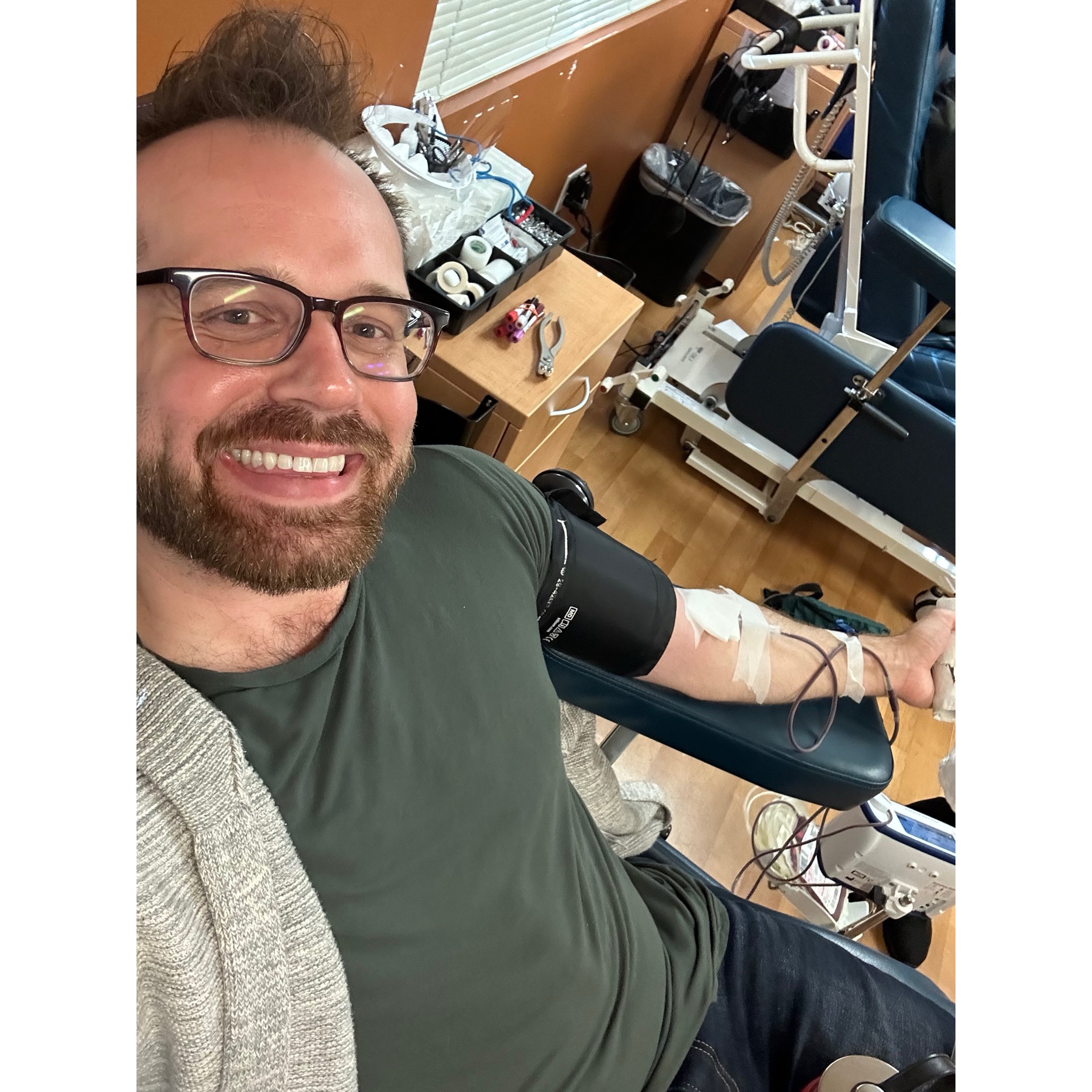
Breaking Barriers: One Advocate’s Journey to Blood Donation
Growing up in a small rural town in Texas, blood drives at Bláz Bush’s high school were a community event. Students were eager to participate, perhaps because it meant skipping class and enjoying free cookies. But for Bláz, these events were filled with a sense of unease. Students often made jokes and disparaging remarks about the questions related to men who have sex with men (MSM), adding to his discomfort. He was still exploring his own sexual identity, so he made up reasons to avoid donating, even jokingly accusing blood centers of selling blood to vampires.
Years later, in college, he found himself in a culture where many students were donating plasma for money. He was out as a gay man by then, and while he was encouraged by his peers to participate by hiding this part of his identity, he knew he couldn’t go through with it. The ban and its implications continued to weigh heavily on him and he was having a difficult time reconciling the stigma he felt with the desire to contribute.
Ironically, he began working for the New York Blood Center, coordinating an HIV vaccine study. “It was painful to work for an organization that wouldn’t accept my blood,” he recalled, though he admired the HIV research efforts and began to understand the complexities behind the policies.
This internal conflict deepened when he worked at a university that held blood drives during Pride Month. Many people were hurt by this, given the MSM ban, but Bláz saw it as an opportunity for advocacy. Members of the trans and lesbian communities who were eligible to donate participated, while others who were not eligible used the platform to gather petitions urging the FDA to change its policies. The mixed emotions he felt reinforced his commitment to fighting for LGBTQ+ inclusion in healthcare and blood donation.
In 2022, he joined Stanford Medicine and learned of a groundbreaking study at Stanford Blood Center (SBC). The study aimed to evaluate universal donor screening policies and make recommendations to the FDA. Excited to participate, he volunteered and became part of history as new guidelines were adopted in the fall of 2023, allowing the MSM community to donate blood based on individual risk rather than blanket restrictions.
“It was such a beautiful thing to see happen given my history,” he shared. “I tried to go donate the very first day that SBC updated their guidelines but sadly I was too excited, and my pulse was too high!” Not an uncommon response to nerves and excitement, yet he notes, “It can be emotional when you can’t donate, whatever the reason.”
In September 2023, he finally succeeded. His pulse was 99 (just under the cutoff!), and his donation went smoothly. He was thrilled to learn he is O-negative—the universal donor. “It felt like a piece of justice. First, to finally learn of my blood type; difficult or expensive to do outside of donating. Second, after so long, I can finally help others in a way I was never allowed to before.”
Today, he serves as Executive Director for the LGBTQ+ Health Program at Stanford, working to ensure affirming healthcare practices across the School of Medicine, hospitals, and beyond. His work addresses disparities in access to care, educates healthcare providers, and empowers LGBTQ+ individuals to receive the respect and care they deserve.
Reflecting on his journey, he said, “I hope my story inspires others. There’s still pain and resentment in our community, but for me it was so therapeutic and healing to go through this experience. I get to say, ‘Look how important it is to be adaptable and to not stigmatize communities, because you not only harm them, but you prevent their ability to share their gifts which can save lives.’”
He expressed deep gratitude to SBC for leading the charge in creating a more inclusive space for donors. “I’ve had a great experience from start to finish, and I appreciate everything SBC is doing to welcome more people into the donor community. Together, we’re creating a stronger, more inclusive future.”
We invite you to watch this short video to hear from Bláz firsthand:
